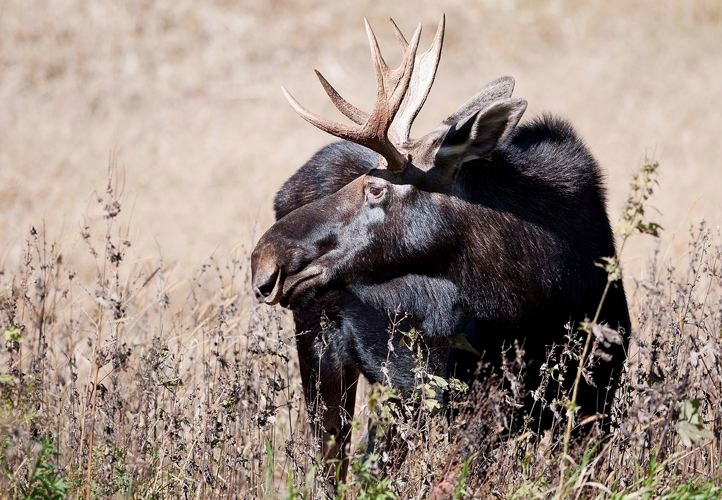Too many moose may be in the gun-sights of recreational hunters, in the view of some local Aboriginal leaders.
July 10 has been picked for "an Emergency Leaders' Summit" convened by the Tsilhqot'in National Government "to consider urgent action in response to the recent provincial moose harvest allocation within the Tsilhqot'in Territory," according to TNG spokesperson Myanna Desaulniers.
It is not known what concerns Prince George's overlaying First Nation, the Lheidli T'enneh, may have. Attempts to reach Chief Dominick Frederick were not successful as of deadline.
Joe Alphonse is the chief of the Nits'il in community, one of six that comprises the TNG. He is the coalition's tribal chair.
Alphonse said, "The Tsilhqot'in Territory faces a dire situation with our declining fish and wildlife populations. It is extremely worrisome that B.C. continues to approve Limited Entry Hunts for moose in our territory with limited science or collaboration. Doing nothing is not an option for us. The province must change the way they manage wildlife. Hosting an Emergency Leadership Summit provides the space for the Tsilhqot'in to meet as a Nation and take action to protect our moose and our culture. We call on B.C. to step up and take further action to protect our moose populations in our territory until they have recovered."
Hunting regulations in B.C. are administered by the Ministry of Forests, Lands, Natural Resource Operations and Rural Development. When questioned by The Citizen on the current state of this area's moose population, how moose hunting allowances were determined, and consultation practices with First Nations on how hunting should be conducted on traditional territories, the Wildlife and Habitat Branch responded by email:
Moose regulations decision
The director of Wildlife and Habitat reduced moose hunting quotas and limited entry hunt (LEH) authorizations in a number of wildlife management units. This reduction is in addition to past harvest reductions and will help to address the "bull-to-cow ratio" concerns in these areas and achieve goals to help increase the populations.
Additional targeted reductions in the number of LEH authorizations were done on a precautionary basis in areas where there was significant wildfire activity or where increased First Nations' bull harvest is anticipated.
This decision was reached after months of consultation and collaboration with local First Nations and other stakeholders, including 11 meetings between provincial and TNG representatives from December 2017 to May 2018 , primarily through the Fish & Wildlife Panel established under the Nenqay Deni Accord. While consensus was not achieved, First Nations' perspectives were a significant part of the process.
Consultation with the TNG and other First Nations is ongoing with respect to moose management. In addition to the consultation leading up to the decision, after the decision was communicated, the director of Wildlife and Habitat has offered to go to the Cariboo and meet with the Tsilhqot'in National Government (TNG), as well as other First Nations and interested regional stakeholders. We are still waiting to hear if this offer is acceptable to organize a mutually agreeable time.
We also recognize that the licensed harvest of moose is only a small component of our moose enhancement strategy, and continue to work with local First Nations and stakeholders to address broader landscape and environmental conditions that impact moose population enhancement.
Moose populations
Results from moose surveys over the last decade indicate moose numbers have declined substantially in parts of the central Interior of the province, including the Cariboo.
There are about 7,850 moose in the North Chilcotin and 3,700 in the South Chilcotin. Between 1999 and 2018, the population estimate in the North Chilcotin has varied between approximately 7,850 and 13,000 and, in the South Chilcotin, between 2,900 and 5,300. The population objective for the North and South Chilcotin is set at about 13,000 and 4,900 respectively.
Population variation is expected and moose are not considered a species at risk.
The current population is below the population objective but can sustain a conservatively managed hunt.



.png;w=120;h=80;mode=crop)